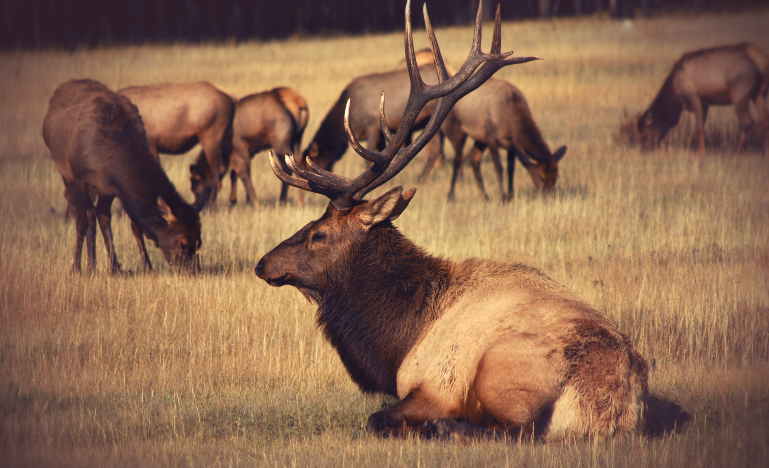Canada needs accountability on biodiversity protection
Its record so far is one of missing targets, rather than meeting them.

Whether it's international commitments under the Convention for Biological Diversity (CBD) or under the 2010 Aichi Protocol to the Convention, Canada has repeatedly failed to meet goals to protect species or their habitat.
And yet, biodiversity is declining faster than at any time in human history, driven by habitat loss and degradation, climate change, pollution, invasive species, and over-exploitation. A landmark 2019 report by the Intergovernmental Science-Policy Platform on Biodiversity and Ecosystem Services found that one million of the world's eight million species of plants and animals are at risk of extinction. In Canada, more than 1,200 species are listed under the Species at Risk Act (SARA), and at-risk species populations have declined 59% since 1970.
In 2018, Canada's Environment Commissioner issued a searing report that found the federal government "had no plan for achieving Canada's biodiversity targets." The goals in place were too "aspirational" rather than practical.
In response to the crisis, the Liberal government has committed to protecting 30% of terrestrial and marine spaces by 2030. However, given the general lack of political will before 2015, the current legislative framework leaves much to be desired, says Stephen Hazell, counsel at Ecovision Law and the former executive director of the Sierra Club Canada and the Canadian Parks and Wilderness Society.
The problem is we don't have a systematic plan. That's led to a patchwork approach to meeting goals and a "bewildering" array of laws and regulations at the federal, provincial and territorial levels. A research study published in 2021 identified 201 laws across the country that have some bearing on biodiversity protection, but found few offered up direct safeguards for ecosystems and species. Many laws are focused primarily on the extraction of natural resources.
"Almost all of our laws and policies in all jurisdictions in Canada are focused on mitigating impacts on biodiversity rather than avoiding them in the first place," says Dr. Justina Ray, president and senior scientist at the Wildlife Conservation Society Canada, as well as one of the report's authors.
"Mitigation makes the problem less bad than it otherwise would be, but very little is done to control or regulate the pace and scale of our consumption and use of the natural resources."
Among laws that aim to protect biodiversity, most focus on species at risk and protected areas. The study found the provisions within them range in strength and distribution.
A case in point is SARA, implemented as part of the Canadian Biodiversity Strategy in response to the United Nations Convention on Biological Diversity. Even if the federal government complied with it, Ray notes it only takes care of a few species. It also requires the cooperation of the provinces, working in tandem with provincial laws.
SARA does give the federal government the power to intervene and put species or habitat protections in place when a province fails to do so. However, the emergency order available under section 80 has been invoked just twice since the legislation was enacted in 2002.
Even though it's been upheld as constitutional, using the power can be politically tricky, says Josh Ginsberg, a lawyer at Ecojustice Canada. So it usually just sits on the shelf. The boreal caribou in Ontario, which are in a dire situation, are just the most recent example. The scientific consensus and directives under SARA say a certain amount of critical habitat has to be protected for them to have a chance of survival.
"But rather than make an order, the federal government made an agreement with Ontario, essentially planning to make a plan for caribou," he says. "There is just inertia on a lot of species."
What's more, "most provinces don't even have endangered species legislation," Ginsberg adds.
As for biodiversity legislation, it is non-existent everywhere but in Nova Scotia. The provincial government enacted the Biodiversity Act in 2021, but industry pressure ensured it was gutted at the last minute.
"It's not much of a bill, but it is something," Hazell says
In Ontario, he says the Endangered Species Act "really is just a joke."
"It's been completely gutted and that started under the provincial Liberal government, and it continued with the provincial Conservatives."
Although wildlife management and halting and reversing biodiversity loss is a provincial area of responsibility, Hazell says, collectively they have successfully ignored the issue.
"The feds get all the heat, especially the environment minister, for not achieving Canada's international commitments. But the provinces have most of the power, and they just hide in the background. There's just a complete absence of political will at the provincial level," he says.
"In the not-for-profit community, we haven't been able to generate the political pressure to really make them pay. So, it's a game the provinces have been playing for decades."
That said, Canada hasn't revisited its biodiversity strategy since it was rolled out in 1995.
This has led to calls for new federal biodiversity legislation. In June, Greenpeace Canada released a report, Protecting nature – protecting life, which detailed how the federal government is failing to protect nature. Working with Ecojustice and Ecovision, it is proposing new legislation to solve systemic problems.
Most importantly, legislation must include clear targets with a plan to halt biodiversity loss. The report notes that as Canada looks to preserve 30% of its land and ocean by 2030, any new legislation should clearly define meeting targets and how it will be achieved. It should also require annual, transparent reporting to Parliament, oversight by the environment commissioner, and offer public recourse for failing to meet targets.
The report stressed that any legislation must recognize the interconnectedness of humans, plants and animals, as well as the Indigeneity of the lands in Canada and the need to restore justice and equity to the natural world.
"On climate, there's a requirement for the federal government to make plans to a certain standard in order to achieve certain clearly defined goals and to report on progress and explain why they're making that progress," Ginsberg says. "There's no reason there should not be a similar scheme for biodiversity. And in fact, there really has to be."
He adds: "It's about planning. It's about accountability and it's about transparency. That's what's missing right now. It's hard to get a clearer picture of exactly what provinces are doing or not doing with respect to the global species protection picture, what overall contributions they're making to the national goals."
Having a clearer picture would make it much easier for the federal minister to use other legislative tools, including emergency orders under SARA, to spur action when a province is failing to protect a species or critical habitat. Hazell says more transparency will also make it easier for groups like Greenpeace and Ecojustice to call the feds or the provinces out and go after them.
Alternatively, with more transparency, the provinces can show how they're meeting goals and have the federal government back down with good cause. But ultimately, "if we don't have a commitment to codify at least the higher-level goals, we're just not going to do it, in my opinion," Hazell says.
He thinks there is a federal appetite for that kind of biodiversity accountability. Environment and Climate Change Minister Steven Guilbeault has an opportunity to address biodiversity as negotiators from the world's 196 countries gather in Montreal for the Convention on Biological Diversity COP15 talks, which Canada is co-hosting with China.
Along with Ginsberg and Ray, their collective hope is that it's possible to negotiate a robust, ambitious global biodiversity framework over the next few weeks. Once an overarching plan is in place, it can serve as a foundation for a better biodiversity legislation in Canada. This country's efforts are key, given it is home to about a quarter of the planet's wetlands and boreal forests, 20% of its fresh water, and its longest coastline.
Given the state of things, Hazell calls this the most important biodiversity summit since Rio in 1992.
"Canada knows that if this is a flop, it's going to be on them. The Chinese don't care. But there will be lots of Canadians who do, and we actually have a free press to talk about it. So, there's a definite downside for Canada if this COP fails."


